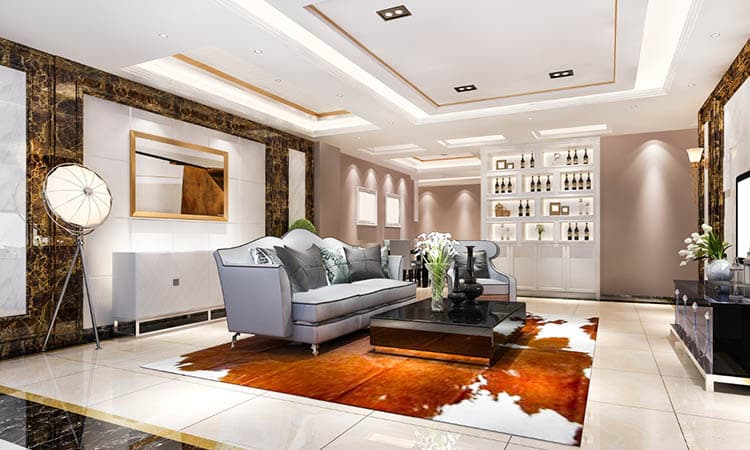Home renovation is more than a cosmetic makeover—it’s a transformative process that breathes new life into your living space, boosts property value, and enhances daily comfort. Whether you’re updating a single room or tackling a full-home remodel, a well-executed renovation plan can dramatically improve your home’s functionality and style.
From modernizing outdated features to making your house more energy-efficient, home renovation offers countless possibilities. However, to ensure success, it’s essential to approach the project strategically, with careful budgeting, planning, and coordination with experienced professionals.
The Motivation Behind Renovating
There are many reasons homeowners decide to renovate. For some, it’s about improving aesthetics. For others, it’s driven by necessity—like repairing wear and tear or increasing energy efficiency. Common motivations include:
- Increasing property value: Upgrades like kitchen remodels, bathroom renovations, or adding square footage can offer significant returns on investment.
- Improving functionality: Rearranging layouts, adding more storage, or converting underused spaces makes your home more livable.
- Enhancing comfort: New flooring, better lighting, and improved insulation contribute to a more comfortable environment.
- Modernizing design: Outdated wallpaper or old appliances can make a home feel tired. A fresh update can align your home with current trends and personal style.
Key Areas to Focus On
1. Kitchen Renovation
The kitchen is the heart of the home, and updating it can make a huge difference in both appearance and practicality. Modern kitchen remodels might include new cabinets, countertops, energy-efficient appliances, and smart lighting systems.
2. Bathroom Upgrades
Bathrooms are one of the most-used rooms in any home, so it’s no surprise they are a top priority during renovations. A bathroom overhaul may involve upgrading fixtures, retiling, or even expanding the space to include a walk-in shower or larger vanity.
3. Living Room & Common Areas
These shared spaces set the tone for your home’s atmosphere. Renovations here often focus on new flooring, paint, window treatments, and improved lighting. Open-concept designs are increasingly popular, creating a sense of spaciousness and flow.
Planning for Structural and Mechanical Updates
While design and décor updates are exciting, structural and mechanical systems are equally important during a renovation. Electrical wiring, insulation, HVAC, and plumbing systems may need upgrades—especially in older homes. These behind-the-walls features are essential for safety and functionality.
Don’t Overlook Plumbing Services
Many homeowners get so caught up in choosing tile colors and countertops that they forget one of the most critical elements of any renovation: the plumbing system. Whether you’re remodeling a bathroom, updating a kitchen, or adding a new laundry room, professional plumbing services are indispensable.
Licensed plumbers ensure proper installation of pipes, faucets, drains, and water heaters. They can also help identify hidden issues, like old lead pipes or corrosion, that might not be visible until walls are opened. Investing in plumbing services early in your renovation project can prevent costly water damage or rework later on.
For example, moving a sink or installing a walk-in shower involves rerouting pipes and ensuring adequate water pressure and drainage. Attempting DIY plumbing during a renovation can lead to expensive mistakes. By working with certified plumbing professionals, you ensure that your upgraded home runs efficiently and remains compliant with building codes.
Sustainable Renovation Choices
Eco-conscious renovations are becoming more popular. Homeowners are seeking ways to reduce energy use and minimize their environmental impact. Here are some green renovation ideas:
- Install energy-efficient windows to reduce heating and cooling costs.
- Use sustainable materials like bamboo flooring, reclaimed wood, or low-VOC paints.
- Upgrade insulation for better thermal performance.
- Add solar panels or energy-efficient appliances.
These choices may involve higher upfront costs, but they offer long-term savings and increase your home’s marketability.
Budgeting and Cost Management
Budgeting is one of the most critical parts of a renovation. A detailed budget should include:
- Materials and finishes
- Labor costs
- Permit fees
- Equipment rental
- Emergency contingency (usually 10-15%)
Homeowners often underestimate the total cost of renovations, especially when unexpected issues arise. Working with experienced contractors can help you understand realistic pricing and avoid budget overruns.
Hiring the Right Team
A successful renovation requires the right team—architects, designers, general contractors, electricians, plumbers, and possibly structural engineers. Always vet professionals thoroughly:
- Check references and online reviews.
- Confirm licensing and insurance.
- Ask for detailed proposals and timelines.
A good contractor will coordinate with subcontractors (like plumbing services) and ensure your renovation proceeds smoothly and according to code.
Final Touches: Design and Decor
Once structural work is complete, it’s time for the fun part—interior design. This phase involves choosing paint colors, furniture, lighting, and accessories. Whether your taste is contemporary, rustic, or minimalist, professional interior designers can help bring your vision to life.
Even small design choices can have a big impact. Floating shelves, statement lighting, and textured wall panels are great ways to add character without overwhelming the space.
Conclusion
Home renovation is an exciting journey that allows you to create a space that reflects your lifestyle and preferences. From aesthetic upgrades to critical services like plumbing, every element plays a role in the success of the project. With thoughtful planning, a realistic budget, and the right professionals by your side, your dream home is well within reach.
So, whether you’re redesigning your kitchen, expanding your bathroom, or modernizing an outdated floor plan, remember that renovation is an investment—not just in your property, but in your daily quality of life.



































